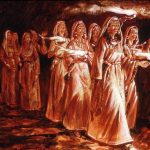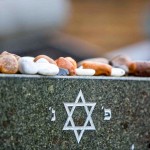
Why do Jews leave stones on graves?
Explanations range from the practical and mundane to the symbolic and psychological.
“And Jacob erected a monument on her grave; that is the tombstone of Rachel until this day” (Genesis 35:20).
The Practical:
- Means: “Here lie the remains of a person worth remembering.”
- When the tradition started, grave monuments were mounds of stone. Visitors added stones to “the mound” to show we are never finished building the monument to the deceased.
- To tell the visitors who followed that others had been there.
- To mark it so relatives will find it
- To identify it so the kohanim will avoid it as required by Jewish law
- To protect the grave from wild animals and grave robbers
- Was a substitute for a tombstone in areas where tombstones tended to be desecrated
The Symbolic:
- Symbolically suggests the continuing presence of love and memory which are as strong and enduring as a rock.
- One name for God is “the Rock of Israel” – so the rock is a reminder of the presence of the Rock, whose love is stronger than death.
- It’s the symbol of an altar, which was no more than a pile of stones.
- The sacred shrine in Judaism is the pile of stones – the wall of the second Temple.
- The stone is the ultimate symbol of something that has no use. The stone teaches us that in the final reckoning the body is as important as a stone. It is adorned by stones. What is left of us is our good name, character and relationship with God.
The Superstitious:
- There is a belief, with roots in the Talmud, that souls continue to dwell for a while in graves where they are placed. The grave, called “beyt olam” (a permanent house) was thought to retain some aspect of the departed soul; means by which the living help the dead “stay put.” Even souls that are benign in life can take on a terror in death. The barrier on the grave prevents the kind of haunting that formed an important part of Eastern European lore.







